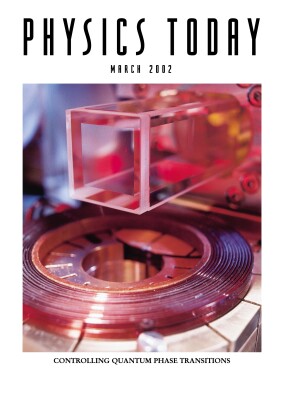Kavli Endows ITP
DOI: 10.1063/1.1472389
The Kavli Institute for Theoretical Physics is how the Institute for Theoretical Physics at the University of California, Santa Barbara, will soon be known, thanks to a $7.5 million gift from local entrepreneur Fred Kavli. The ITP was founded in 1979 and its roughly $5 million annual running budget comes from NSF and UCSB. The Kavli money will help pay for expanding the ITP’s building, doing research, and bringing scientists to the institute’s celebrated workshops.
“Fred’s gift will give us more flexibility to move in new directions,” says ITP director David Gross. “Unexpected scientific breakthroughs cannot be easily accommodated by five-year funding cycles.” For the next few years, Gross adds, biophysics will be among the topics “we’ll keep looking at. There are a lot of exciting opportunities, and many physics departments are thinking about biology.”
Kavli studied physics in his native Norway. He came to the US in 1956, and two years later founded Kavlico Corp in Moorpark, California, about 60 kilometers northeast of Los Angeles. The company has become one of the world’s top suppliers of sensors for the automotive and aeronautic industries.
Kavli’s gift to the ITP comes via his newly established Kavli Foundation, through which he plans to create endowed chairs at leading universities worldwide and give prizes to promote and recognize excellence in research. “Insights into fundamental reality form the basis for technological innovation,” says Kavli. “The synergy that takes place among scholars who participate in the ITP’s workshops, conferences, and residencies is astonishing. This gift, by helping the ITP to accommodate more participants in its programs and by supporting and inspiring its scientific discoveries, will make those programs even more valuable and productive for all involved.”

Kavli
ITP


The expanded building will add 30% to the capacity of the Institute for Theoretical Physics. Construction begins next year on the new wing, which is on the left in this architect’s rendering.
(Courtesy of Michael Graves and Associates.)

More about the Authors
Toni Feder. American Center for Physics, One Physics Ellipse, College Park, Maryland 20740-3842, US . tfeder@aip.org
